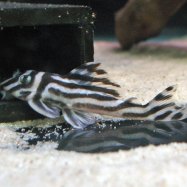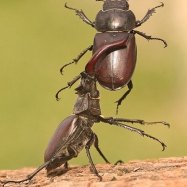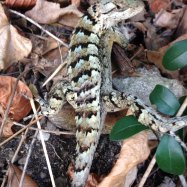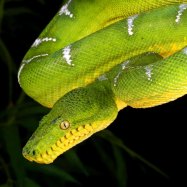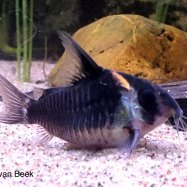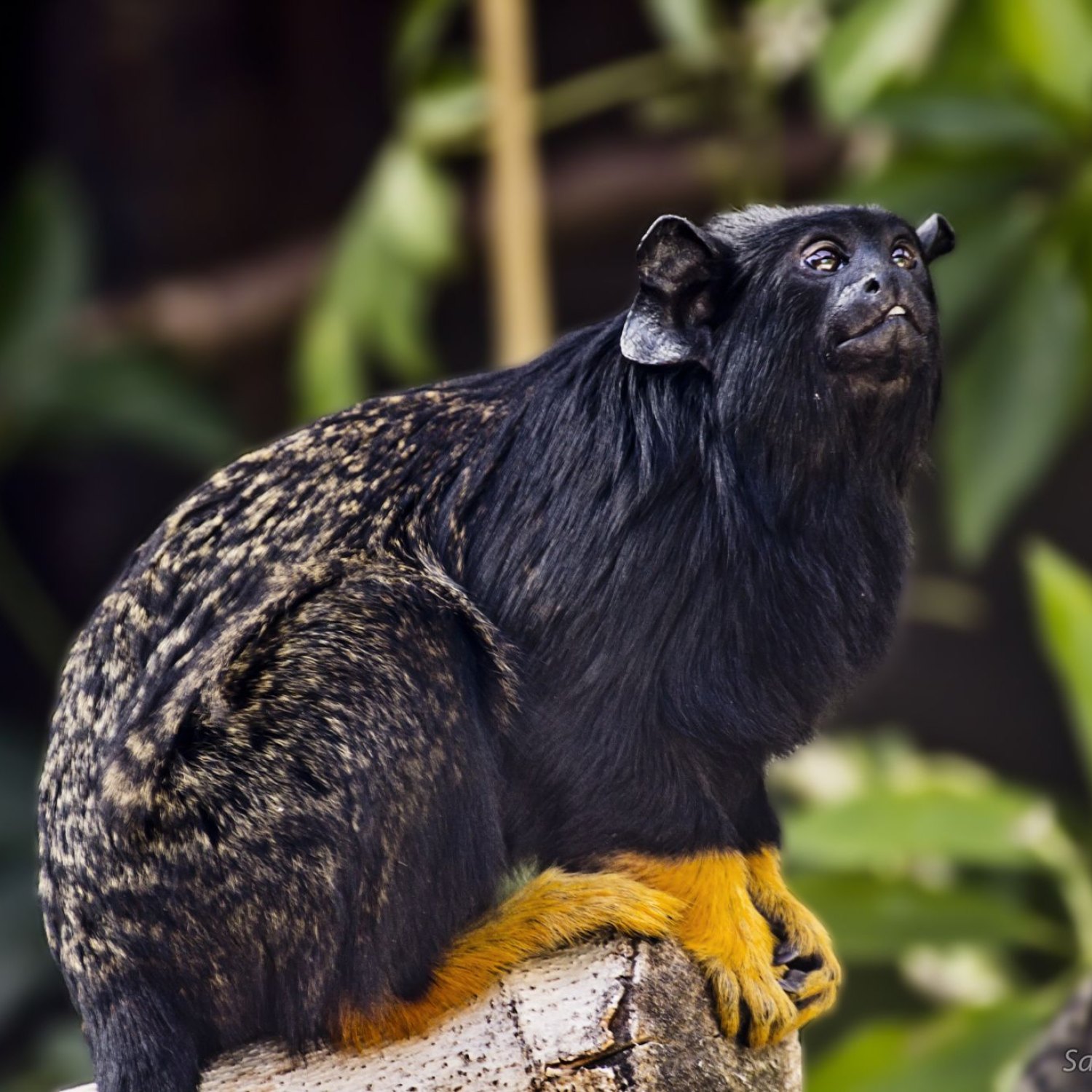
Red Handed Tamarin
22 to 26 cm
The Red Handed Tamarin, known for its distinctive red hands, is a small and slender primate found in the Amazon Rainforest. Belonging to the Callitrichidae family, these adorable creatures measure between 22 to 26 cm in length. With their unique body shape and playful nature, they are a must-see for any nature lover in the Amazon. #RedHandedTamarin #AmazonRainforest #Callitrichidae #SmallPrimate
Animal Details Summary:
Common Name: Red Handed Tamarin
Kingdom: Animalia
Habitat: Tropical rainforests
The Mischievous Red Handed Tamarin: A Master of the Canopy
The Amazon rainforest is home to a vibrant array of animal species, each one uniquely adapted to survive in this lush and complex ecosystem. Among these species is the Red Handed Tamarin (Saguinus midas), a small mammal that is a master of the canopy in which it resides. Although it may be small in size, this primate is big on personality and plays an important role in maintaining the delicate balance of the rainforest. Let's dive into the world of the Red Handed Tamarin and discover what makes this tiny primate so fascinating Red Handed Tamarin.An Introduction to the Red Handed Tamarin
Known for its distinctive reddish-orange hands, the Red Handed Tamarin is a primate species belonging to the Callitrichidae family, which also includes marmosets and tamarins. It is native to the tropical rainforests of South America, specifically in Brazil's Amazon rainforest. This primate species is named after King Midas from Greek mythology, as its scientific name suggests, due to its reddish-gold fur and the "golden" coloration of its hands.Physical Characteristics
The Red Handed Tamarin is a small primate with a slender body shape, measuring between 22 to 26 cm in length. They weigh an average of 500g, making them one of the smallest primates in the world. Like many primates, this species displays sexual dimorphism, with males being slightly larger than females.This primate is easily recognizable by its vibrant coloration. Their fur is predominantly red or orange, with black and white markings on their face, feet, and tail. They have long, thin limbs, which are perfect for leaping through the trees of the rainforest canopy Rockfish. Their hands are the most striking feature, with a golden-orange hue that stands out against their red fur.
Habitat and Distribution
The Red Handed Tamarin's natural habitat is the tropical rainforests of South America, specifically in the Amazon rainforest. They can also be found in the rainforests of Peru, Brazil, and Bolivia. This primate species is specially adapted to life in the rainforest canopy, where its small size and agile movements allow it to easily move among the branches and twigs.Within their habitat, the Red Handed Tamarin can be found in various types of forests, from primary and secondary rainforests to deciduous and flooded forests. They prefer to live near bodies of water, like rivers and streams, as a source of food and for transportation. These primates are social creatures and live in groups of up to 40 individuals, consisting of males, females, and their offspring.
Diet and Feeding Habits
The Red Handed Tamarin is an omnivorous primate species, meaning it eats both plant and animal matter. However, most of its diet consists of fruits, flowers, and insects. They use their sharp nails and long fingers to forage for food in the rainforest canopy, often taking advantage of their small size to reach places that other animals can't.One interesting feeding behavior of the Red Handed Tamarin is their "scent-marking" behavior, where they rub fruits and flowers on their hands and feet before eating them. This behavior leaves a distinct scent trail that helps them find their way back to a food source or communicate with other members of the group about the availability of food.
The Role of the Red Handed Tamarin in the Ecosystem
As an integral part of the Amazon rainforest, the Red Handed Tamarin plays a crucial role in maintaining the balance of this delicate ecosystem. They are important seed dispersers, as they often eat fruits and excrete the seeds throughout the forest, helping to regenerate new plant growth. They also control insect populations, as their diet includes a variety of insects like caterpillars, ants, and grasshoppers.Furthermore, the Red Handed Tamarin is a keystone species, meaning their presence or absence has a significant impact on the overall health of the ecosystem. This primate serves as prey for larger predators, such as birds of prey, snakes, and wild cats. If their population decreases, it can lead to a decline in the population of their predators, causing a ripple effect throughout the entire food chain.
Conservation Status
Unfortunately, the Red Handed Tamarin is currently listed as an endangered species on the IUCN Red List. The main threats to their survival include deforestation, habitat fragmentation, and illegal pet trade. With the continuous destruction of their natural habitat, the population of this primate species has drastically decreased, leaving only a few thousand individuals left in the wild. Conservation efforts are being made to protect their habitat and prevent further exploitation of these animals.Fun Facts about the Red Handed Tamarin
- The hands and feet of Red Handed Tamarins change color when they are ready to mate. They turn bright red to attract potential partners.- These primates are known for their vocalizations, and they use a variety of calls to communicate with each other.
- The Red Handed Tamarin has a specialized claw on its lower front teeth called the dental comb, which they use to groom themselves and others in their group.
- They are diurnal creatures, meaning they are active during the day and sleep at night in tree cavities or tangled vines.
- Females have an average of two offspring per year, with a gestation period of 140-145 days.
In Conclusion
The Red Handed Tamarin may be small in size, but its impact on the Amazon rainforest is significant. As a keystone species, this primate plays a vital role in maintaining the balance of this rich and diverse ecosystem. With continued conservation efforts, we can hopefully protect this species and ensure that they continue to thrive in their natural habitat. So, let's work together to save the mischievous Red Handed Tamarin and preserve the beautiful rainforests they call home.

Red Handed Tamarin
Animal Details Red Handed Tamarin - Scientific Name: Saguinus midas
- Category: Animals R
- Scientific Name: Saguinus midas
- Common Name: Red Handed Tamarin
- Kingdom: Animalia
- Phylum: Chordata
- Class: Mammalia
- Order: Primates
- Family: Callitrichidae
- Habitat: Tropical rainforests
- Feeding Method: Omnivorous
- Geographical Distribution: South America
- Country of Origin: Brazil
- Location: Amazon Rainforest
- Animal Coloration: Red, orange, black, and white
- Body Shape: Small, slender
- Length: 22 to 26 cm
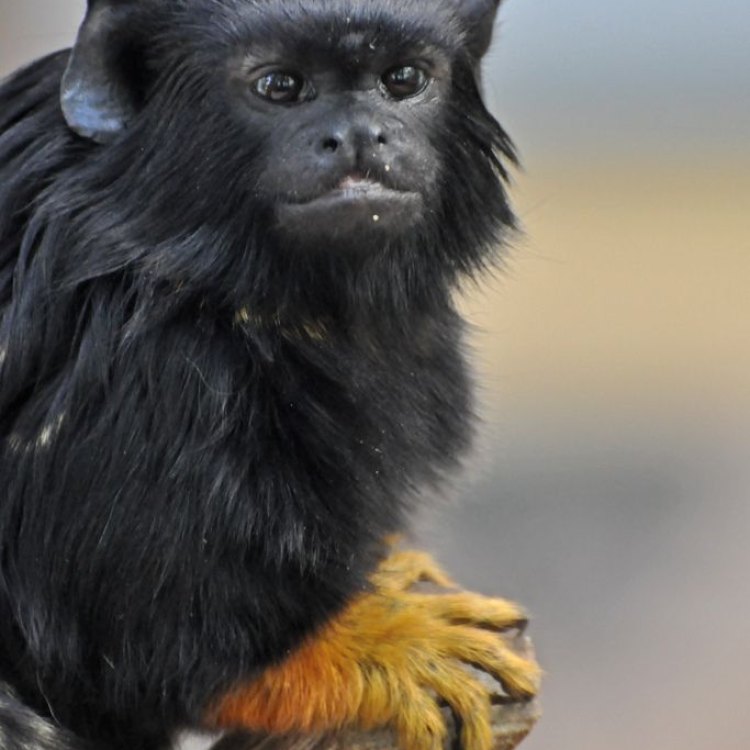
Red Handed Tamarin
- Adult Size: 250 to 400 grams
- Average Lifespan: 10 to 12 years
- Reproduction: Monoestrous
- Reproductive Behavior: Cooperative breeding
- Sound or Call: High-pitched calls and whistles
- Migration Pattern: Non-migratory
- Social Groups: Small groups
- Behavior: Diurnal, arboreal
- Threats: Habitat loss, illegal pet trade
- Conservation Status: Least Concern
- Impact on Ecosystem: Seed dispersal
- Human Use: None
- Distinctive Features: Red hands and feet
- Interesting Facts: They have scent glands on their chest
- Predator: Large birds of prey
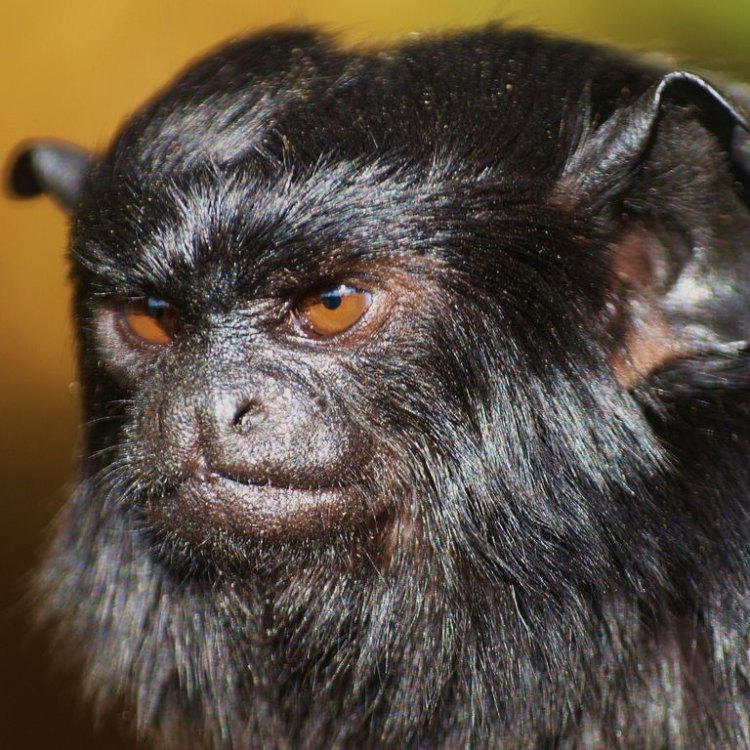
Saguinus midas
The Red Handed Tamarin: A Tiny Primate with a Big Impact
Deep in the lush rainforests of South America, you may catch a glimpse of a small, vibrant primate with a distinct reddish hue to its hands and feet. Meet the Red Handed Tamarin, a species of monkey that may be small in size, but has a big impact on its ecosystem.Adult Red Handed Tamarins weigh in at a petite 250 to 400 grams, making them one of the smallest monkey species in the world. Despite their small size, they have a strong presence in the Amazon rainforest and neighboring forests, thanks to their unique behavioral and physical characteristics PeaceOfAnimals.Com.
First, let's take a closer look at the basic data of the Red Handed Tamarin. On average, these primates live for 10 to 12 years, which is quite impressive for a creature of their size. They reproduce once a year, following a monoestrous cycle, meaning they only ovulate once during their reproductive cycle. This unique reproductive behavior is just one aspect that sets them apart from other primates.
Another fascinating behavior of the Red Handed Tamarin is their cooperative breeding system. In this system, one dominant female in the group, the alpha female, is responsible for the majority of the breeding. The other females in the group serve as helpers, assisting with the care and raising of the alpha female's offspring. This cooperative breeding behavior helps ensure the survival and success of the group's offspring, another distinctive feature of this remarkable primate species.
Aside from their intriguing social structure, Red Handed Tamarins are also known for their vocalizations Roe Deer. They communicate with high-pitched calls and whistles, which researchers believe are used to establish territory and coordinate group movements. These calls can often be heard echoing through the forest, adding to the lively symphony of the rainforest.
Unlike other monkey species that may migrate seasonally, the Red Handed Tamarin is a non-migratory species. They prefer to stay within their territory, which ranges from 50 to 100 hectares, and move within it depending on food availability. This behavior benefits the surrounding ecosystems, as these small primates play a crucial role in maintaining the balance of their habitat.
Socially, Red Handed Tamarins live in small groups of around 2 to 8 individuals, consisting of one dominant male and several females. Their social hierarchy is established through a combination of vocalizations and physical displays, including grooming and scent marking. These small groups are tightly knit and help them survive in the sometimes harsh and competitive rainforest environment.
As diurnal animals, Red Handed Tamarins are most active during the day, with their feeding and foraging activities primarily taking place in the morning and late afternoon. They are arboreal creatures, meaning they mainly live and move through the trees. Their ability to leap and cling to branches with their long, clawed fingers and toes allows them to navigate through the dense rainforest canopy with ease.
While Red Handed Tamarins may seem like harmless and adorable primates, they face numerous threats in their natural habitat. One of the biggest threats is habitat loss due to deforestation for agriculture and urbanization. The continued destruction of the rainforest has resulted in fragmentation and isolation of their populations, making them more vulnerable to other threats.
Another significant threat to Red Handed Tamarins is the illegal pet trade. These intelligent and social animals are often captured and sold as exotic pets, leading to the decline of their wild populations. It is estimated that for every monkey that makes it into the pet trade, many more die during the capture and transportation process.
As a species, Red Handed Tamarins are classified as Least Concern on the IUCN Red List, meaning they are not currently facing any significant threats to their survival. However, their population is declining, and if conservation efforts are not put in place, they could face a more critical situation in the future.
Despite the many challenges they face, Red Handed Tamarins play a vital role in their ecosystem. As seed dispersers, they help maintain the health of their forest home by spreading the seeds of the fruits they eat. This act allows for the growth and regeneration of the forest, making them crucial in maintaining the balance of the rainforest ecosystem. Without their essential role, the forest could suffer, leading to a domino effect on other plant and animal species that rely on the rainforest for survival.
While humans have not traditionally used Red Handed Tamarins for any specific purpose, there is one interesting fact about them that is worth mentioning. These primates have developed distinctive scent glands on their chests, which they use to mark their territory and communicate with each other. These glands contain a secretion that gives off a pungent odor, which may also be used to ward off potential predators.
Speaking of predators, the Red Handed Tamarin may be small, but it has its fair share of natural enemies in the rainforest. Large birds of prey, such as hawks and eagles, are known to prey on these small primates. However, their social structure and cooperative breeding behavior make them more resilient against predators, with group members working together to protect their young from potential threats.
In conclusion, the Red Handed Tamarin may be one of the smallest primate species, but it has some remarkable and unique features that make it stand out in the vast and diverse Amazon rainforest. From their cooperative breeding behavior to their distinct vocalizations and bright red hands and feet, these primates play a vital role in their ecosystem. As threats continue to loom over their survival, it is crucial to take action to protect and conserve this charming and essential species for the benefit of both the rainforest and our planet.
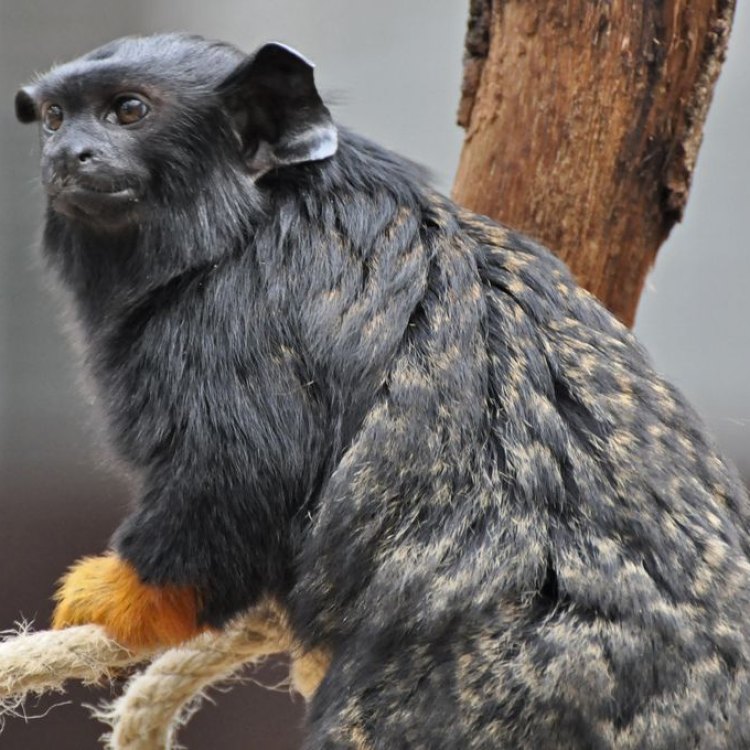
The Mischievous Red Handed Tamarin: A Master of the Canopy
Disclaimer: The content provided is for informational purposes only. We cannot guarantee the accuracy of the information on this page 100%. All information provided here may change without prior notice.




